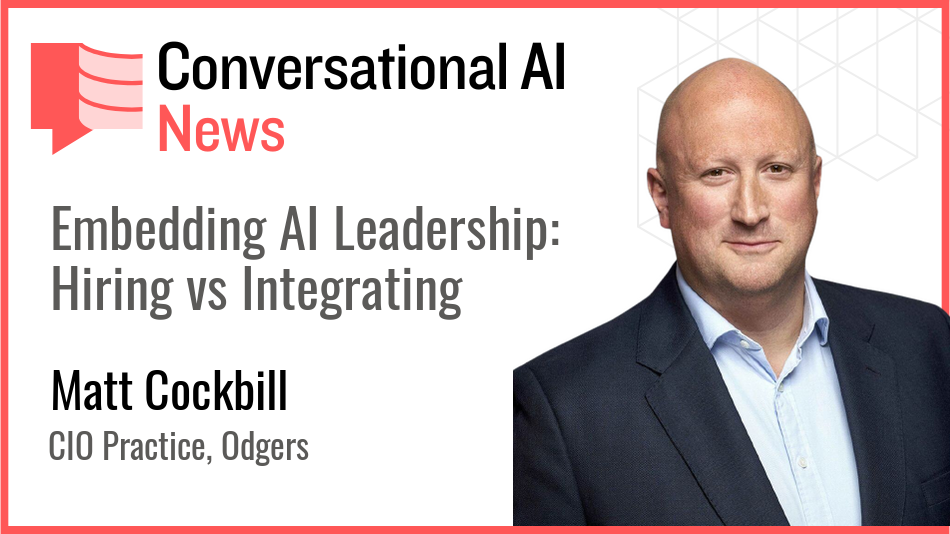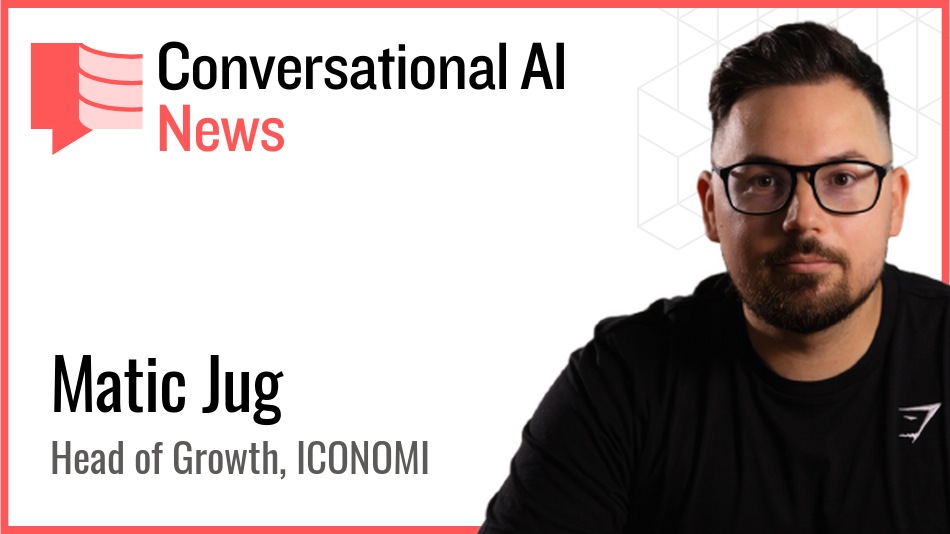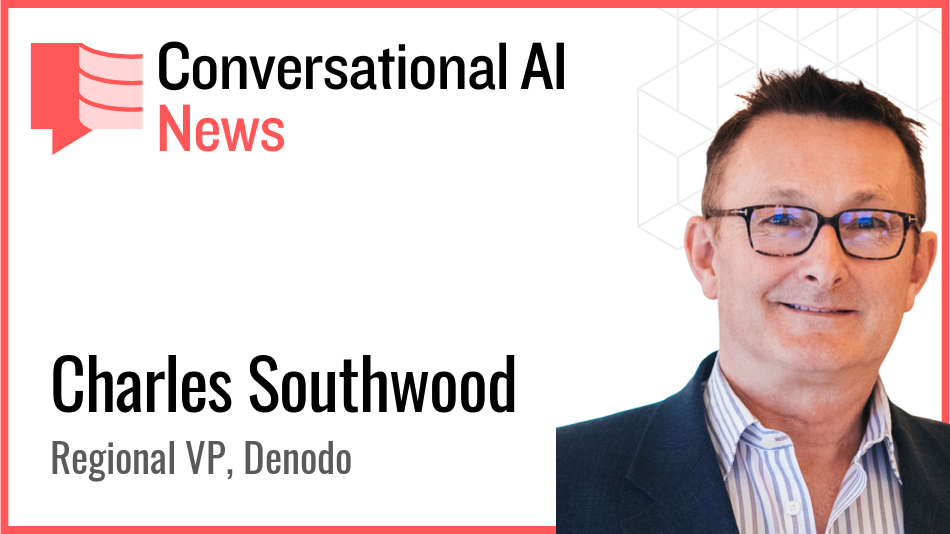Embedding AI Leadership: When to Hire, When to Integrate

Today we're meeting Matt Cockbill, Partner in the CIO & Technology Officers Practice at Odgers. The company specialises in appointing CIOs, CTOs, CDOs, CISOs, CAIOs, and senior technology transformation leaders across the manufacturing, aerospace & defence, and industrial sectors.
I was keen to get Matt's viewpoint on what he and his colleagues are seeing moving in the C-Suite space with respect to AI.
Over to you Matt - my questions are in bold:
Conversational AI: You've observed a shift from standalone Chief AI Officer roles to embedding AI leadership within existing C-suite positions. What's driving that shift?
It largely comes down to the scale and maturity of the organisation. If AI is still being used primarily for internal productivity or efficiency gains, embedding AI within the CIO or CDO remit makes sense. But where there's real ambition – using AI to drive customer value, revenue growth, or market differentiation – organisations begin to re-evaluate. The more advanced and widespread the use of AI, the more likely a dedicated role becomes relevant and it is increasingly aligned to the digital product function, with data science and engineering remaining with CDO's.
Conversational AI: How do you advise boards on whether to hire a dedicated CAIO or embed AI into other C-suite positions?
It depends on the organisation's digital maturity and the capability of its existing executive leadership. You need to ask: where does the CIO, CTO, or CDO sit in terms of influence? And are they equipped to recognise and realise AI value cases across the business? In some sectors – say, marketing or creative industries – AI is embedded into workflows from automation to complex modelling alongside accelerating the creative cycle. In others, it's still early days. Boards need to make the call based on the business case, not the buzz.
Conversational AI: What are the signs that a business is ready to move from AI experimentation to structured implementation?
Successful adoption often starts with proof of concepts that build trust and traction. You'll see teams from across the organisation gravitate toward the initiative, a simple halo effect. The challenge isn't a lack of use cases; it's narrowing down to the ones that truly generate value. At this point, generative tools like ChatGPT or CoPilot are becoming part of the furniture – like collaboration tools have become part of our daily norms. The next leap is using AI to unlock performance, customer loyalty, and competitive edge.
Conversational AI: Has the way companies measure the ROI of AI changed over the past year?
Absolutely. A year ago, it was about productivity, saving 15 minutes in our working day. But the business value of that is hard to quantify. Instead, we're now seeing improvements in employee engagement and digital fluency. These are softer metrics, but they're critical for long-term transformation. ROI is shifting from time saved to capabilities built and customer impact.
Conversational AI: What does effective AI leadership at the board level look like today?
Two years ago, when GPT-4 launched, there was a flurry of boardroom interest, but often without a clear strategy. Many companies had been using machine learning for years, but suddenly everyone wanted to talk "AI." That urgency has since matured. Now, boards are focused on how AI can deliver specific, tangible outcomes – whether operational, customer-centric, or strategic. They're more confident, and more discerning, about where to deploy it.
Conversational AI: Are boards truly ready to engage with AI at a strategic level?
Increasingly, yes. They understand that AI is part of a broader digital transformation journey, not just a novelty. The key is leadership maturity: recognising the real commercial impact of AI and using it to create momentum, not distraction. AI is moving from a differentiator to an enabler, and boards are waking up to that.
Conversational AI: What are the biggest challenges companies face when hiring senior AI talent?
The first challenge is introspection. Companies need to ask: are we actually ready for this investment? Early in an enterprise AI journey, CIOs & CTOs will be championing the embedded capabilities within existing platforms. But as the opportunities to exploit AI build in scale, the case for an AI specialist – a leader with meaningful domain expertise – who can not only build the capability but embed it across tech and business units increases.
Conversational AI: Is there a talent bottleneck at the leadership level?
There's definitely a push to hire people who can show hard results. AI is evolving so fast that we're not quite at bottleneck stage – it's more of a persistent drive to find leaders who've delivered tangible value. Sectors like telecoms & media, consumer goods, and retail financial service are moving quickly. Other sectors will be seeking to take advantage of their expertise as they shift into higher AI gears.
Conversational AI: How do AI leadership structures differ under a CIO versus a CDO?
It depends entirely on the business context and the nature of the leader they report to! What matters most is alignment between commercial goals and technology strategy – what problem does it solve and how does it further our business objectives relating to customer, commercial, and operational outcomes.
Conversational AI: Will the CAIO role become a permanent C-suite fixture?
It's too early to say. There are many companies with a Chief AI Officer in name, but few if any sit on the executive committee. Whether that changes depends on the value case. In tight economic conditions, boards are unlikely to add a new senior role unless AI is core to their transformation agenda. That said, senior AI leaders are becoming more influential, and where the mandate and budget exist, they'll have a seat at the table.
Conversational AI: If you had to give one piece of advice to a company just starting its AI journey, what would it be?
The same message echoes back from those who are succeeding here: start with data. I recently read a great article titled 'AI as a farce multiplier' – it's only as good as the data it draws upon. Strong data foundations and a sharp focus on understanding the problem to be solved take us to a good place. Ask: will this add real value for my customer? AI can improve decisions, personalise experiences, reduce errors, but it's not magic. It's a tool. Human judgement to define clarity of purpose, enabled by appropriate guardrails of ethics and governance will provide a strong platform for success.
Thank you very much, Matt!
Read more about Matt on LinkedIn and find out more about Odgers at www.odgers.com.




